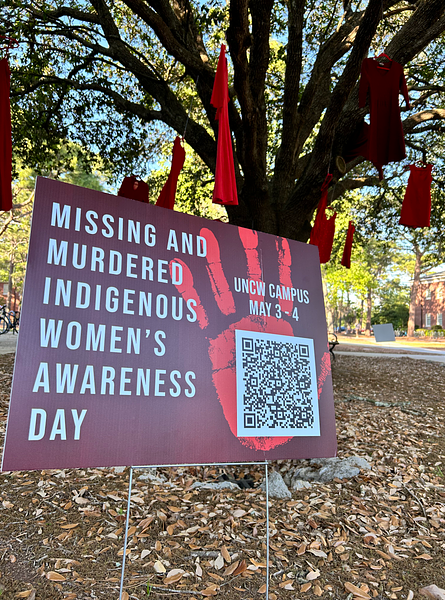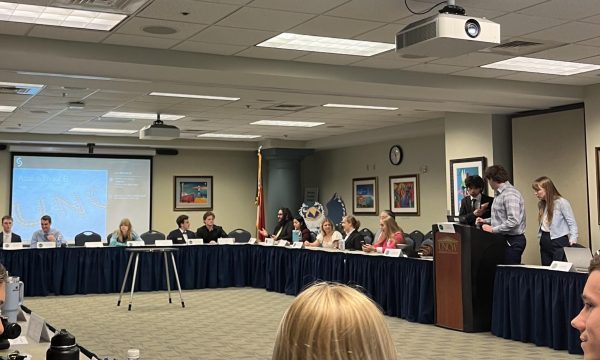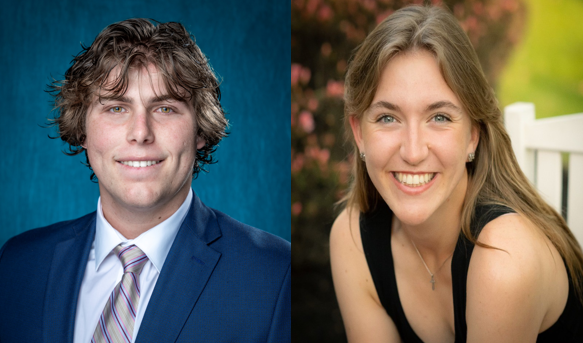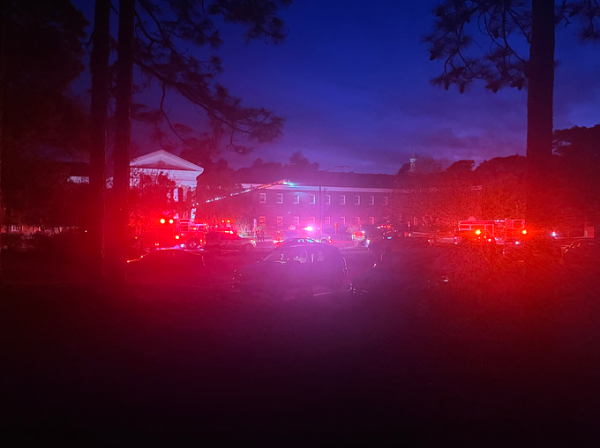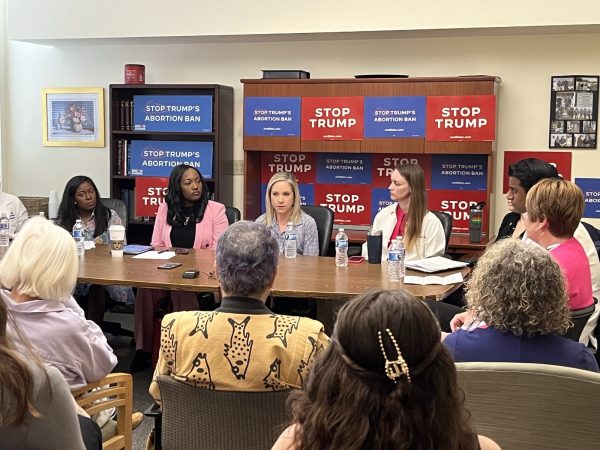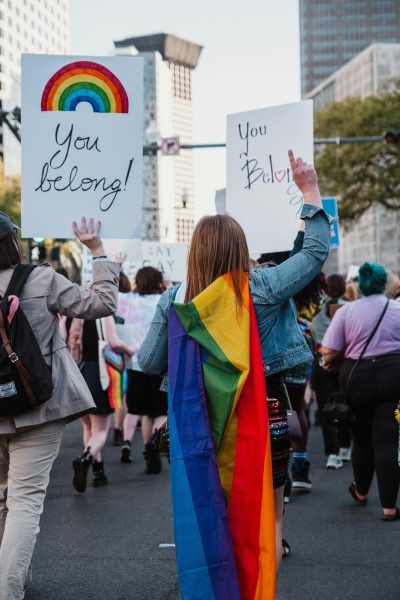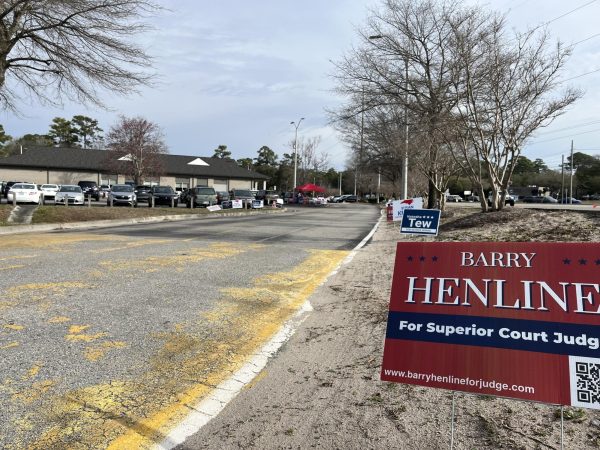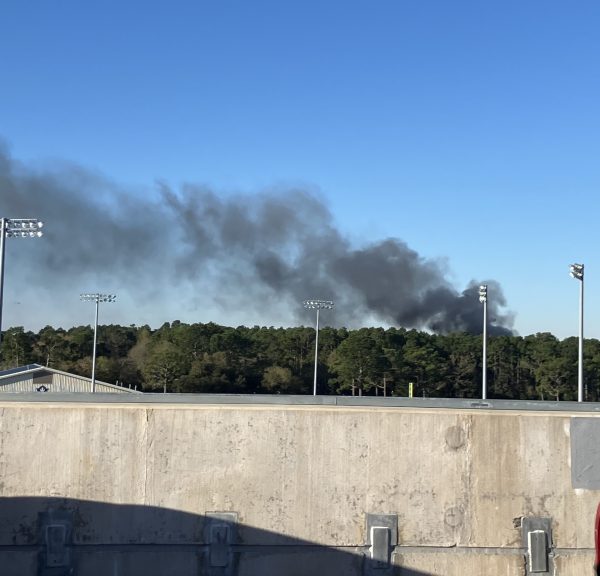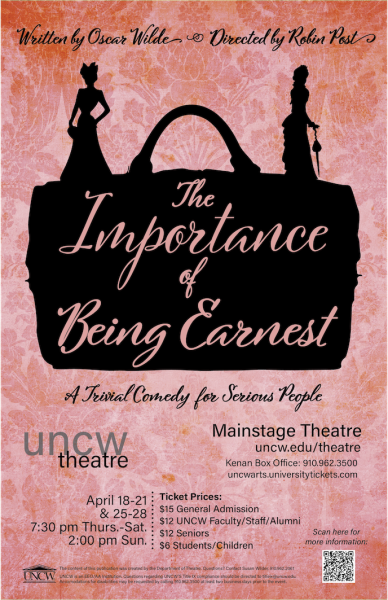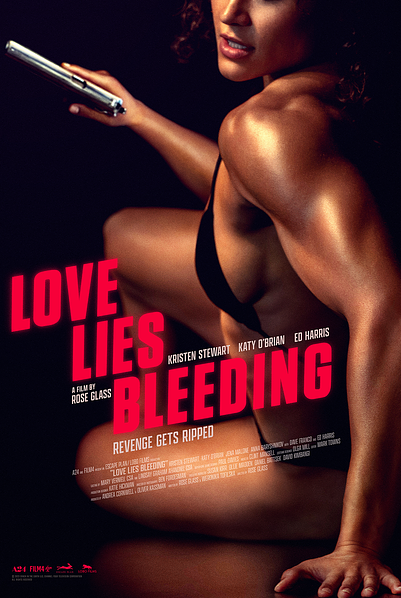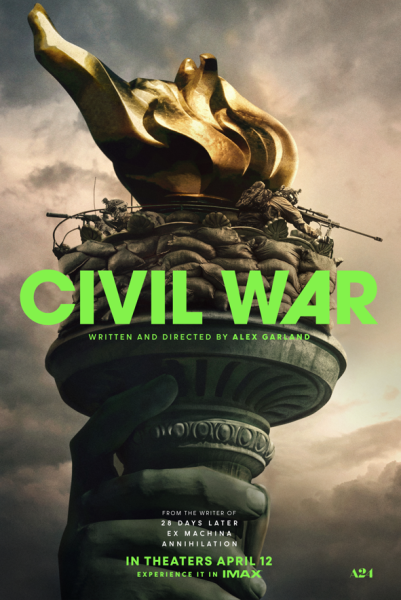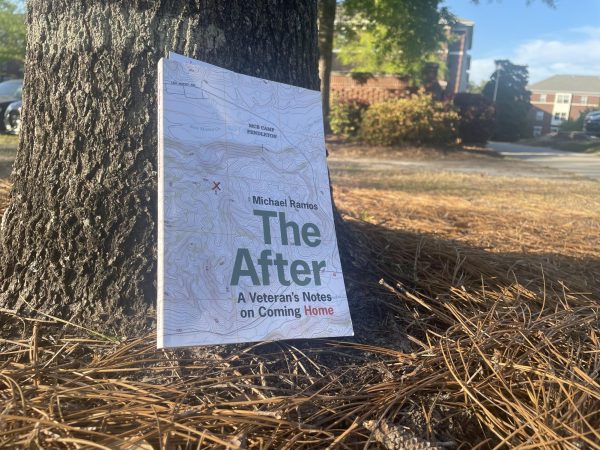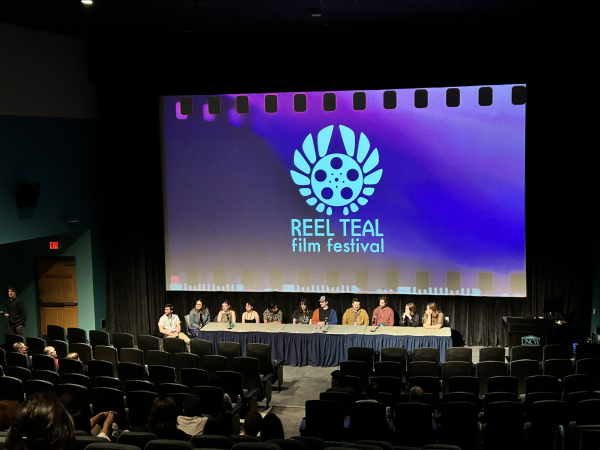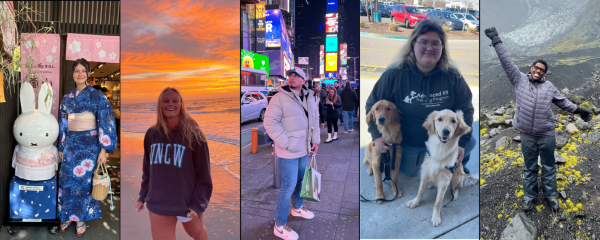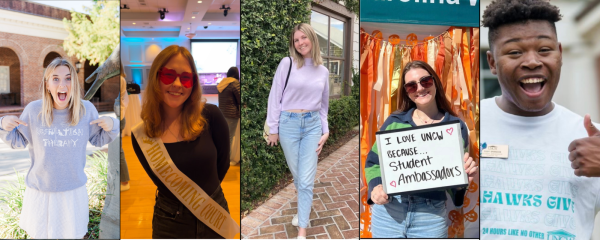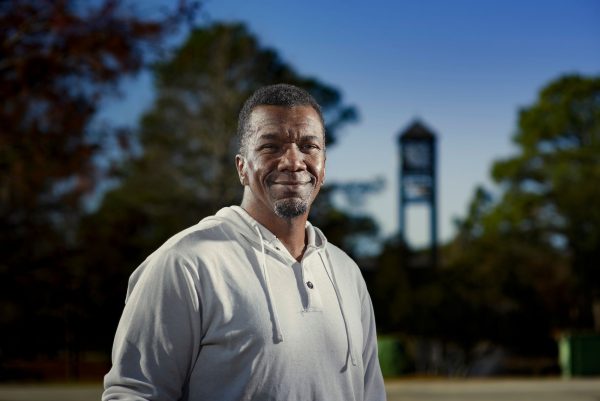Banned Books Week comes to UNCW
October 13, 2016
Darker themes in literature allow teenagers to be introduced to difficult topics such as rape, murder, and racism, but these books are often involved in controversial battles of censorship. The ultimate question: Should children be allowed to read whatever they can get their hands on, or should someone look over their shoulder to make sure they don’t stumble across inappropriate material? Banned Books Week, sponsored by the American Library Association (ALA) and celebrated in libraries across the nation, honors the right to read and encourages readers to consider the importance of freedom of choice.
Students from English 382, “Ways of Teaching Literature,” staged the fourth annual read-in of historically banned books in Randall Library as part of their unit on darker themes in literature. Each student chose a historically controversial book that has significance to them and read a passage that has been challenged.
Education major Nicholas Howe chose “The Giver,” by Lois Lowry, because it was the first book he kept with him at all times. Reading this book made him interested in dystopian literature and books that have themes of rebellion. According to the ALA, “The Giver” has been challenged for being “unsuited to age group” and “lewd and twisted,” which is ironic because of its themes of fighting censorship and oppression in a dystopian society. “We all have choices to make,” said Howe, “and the ability to choose what you read is one of the biggest ones.”
This year’s read-in, held on Sept. 29 in the Sherman Hayes Gallery, featured passages from “The Giver,” “Go Ask Alice,” “The Dead Zone,” “To Kill a Mockingbird,” “The Absolutely True Diary of a Part-Time Indian,” “Speak,” “Slaughterhouse 5,” “Harry Potter,” “The Perks of Being a Wallflower,” “The Outsiders” and other books that have been challenged for inappropriate themes. The goal was to read from as many banned books as possible during the ninety minutes.
Junior Olivia Cuthbertson read from “The Great Gatsby,” by F. Scott Fitzgerald, because it opened her eyes to the power of corruption, whether for money or for love. This book, part of many high school reading lists and the inspiration for five movies, has been challenged for sexual references and language concerns. Cuthbertson, an education major, doesn’t think books should be banned. “In life, there is not always one right answer,” said Cuthbertson. “Some books are more controversial than others, but that means the author felt something needed to be said on a subject and had the courage to do so.” She worries that banning books keeps children in a bubble and cuts them off from alternative ways of thinking that are important to learn in a diverse society like America’s.
The teacher of “Ways of Teaching Literature” said her parents let her read whatever she could get her hands on. “Parents who censor are missing a great opportunity to use literature to discuss the behavior that goes against their values,” said Michelle Manning.
Even though it’s hard to imagine exposing a child to scenes of rape or violence, the lines of censorship are blurred: What is the appropriate age to introduce these difficult topics into the classroom? To introduce them before children are ready to discuss them would be a mistake, but to pretend like these issues don’t exist would be worse.
Randall Library’s Humanities Librarian agreed. “After getting through disturbing themes in a book,” said Lisa Coats, “you come out the other side saying, ‘I don’t want to be like that. I don’t want to get to that point.’” Even though libraries have to make choices about what to include and exclude in their collections, her mission as a librarian is not to censor for content but to cater to Randall Library’s audience.
Being a teenager is hard. It’s important for teenagers to read about people who are also experiencing turmoil, confusion and loneliness in their lives, even if the situations are not identical. “When they don’t see themselves in literature, they become the outsider,” said Coats. “They become alienated. They feel like they should be ashamed of whatever they’re experiencing.”
This is especially important in the way society views rape, said Manning. Violent rape scenes in books are frequently challenged for being pornographic, but she argued that graphic description of rape is different than pornography because of the intent. “We’re still associating that it’s just a sexual thing that happens,” said Manning, “but rape is not about sex. Rape is about violence, and victims are supposed to be ashamed of it?”
Senior Abigail Steinberg chose to read from “Speak,” by Laurie Halse Anderson, during the read-in because when she read it over the summer, the gritty themes of sexual assault and its consequences surprised her. “It’s critical we send the message that it is not only safe to talk about their experiences,” Steinberg said, “but it’s a core element in the process of healing from those traumatic events.”
She argues that it doesn’t make sense to ban books because the reason libraries and schools exist is to spread knowledge. “Reading bridges the gap of difference we have in society by placing everyone on the level of human,” Steinberg said of why reading is so important to her. “Every story, no matter how gritty or grimy, raw or blunt, happy or sad, deserves the chance to be read.”
That’s why Manning thinks challenging books are crucial to society. “I always tell my students that dangerous literature is a way to safely explore the world,” she said.
Dark themes in literature also serve as reminders of dark times in history that should not be repeated. “I hear a lot of people say, ‘Why the World War II and Holocaust themes over and over again?’” said Coats. “Part of that is that we are in fear of that stuff being buried and happening again. It’s important for people to know that happened, and fiction is an easier way for people to digest some of this.”
Books have been challenged in America since 1872, when Anthony Comstock founded the New York Society for the Suppression of Vice. Their mission was to “ban materials found to be lewd, indecent, filthy or obscene,” according to the First Amendment Center website. Congress passed a law allowing Comstock to confiscate mail that did not uphold their Victorian ideals of literature, which were thought to be gentlemanly and pure texts. Chaucer, Hemingway, Fitzgerald, Steinbeck and Joyce are just a few authors whose books were deemed inappropriate for circulation by this society.
In modern-day America, it is rare that a book is completely banned because now the public understands their rights granted by the Constitution. There are still those who seek to limit the spread of “dangerous books.” Since 1990, the ALA has received over 10,000 challenges, most of them directed towards classroom reading lists or school libraries. Sometimes they concern topics that are unresolved in our own society and therefore controversial—racism, rape, or homosexuality—or they discuss themes that could be considered too mature for some audiences—graphic sex, language, or violence.
Manning emphasized that it’s okay for people to express feelings of dissent, but that’s where she draws the line. “You have every right to do whatever you want with your own child, but you do not have the right to say what everybody does with their children,” Manning explained, saying she couldn’t support one side of free expression without supporting the other.
However, objections usually come from parents who have not read the book in question, making it impossible to see the bigger picture of why a questionable component is necessary. “There may be sex, rape, or language,” said Coats, “but they haven’t seen why that’s there. They’re looking at it out of context; they’re not thinking about how it will be used in a classroom.”
Lois Lowry, author of “The Giver,” argues that banning books is dangerous to society. “Any time there is an attempt to ban a book, you should fight it as hard as you can,” said Lowry in response to challenges against her own book. “The world portrayed in ‘The Giver’ is a world where choice has been taken away. It is a frightening world. Let’s work hard to keep it from truly happening.”
There is a big difference between disliking a book, prohibiting your child from reading the book, and asking for the book to be removed from shelves. Freedom of expression allows each person to have their own opinion, proponents and dissenters alike, but only when the other’s rights are protected. When books are removed from libraries or put under restrictive boundaries, when a child must have a parent’s signature to read a book about a prince who marries another prince, that is when the right to read is infringed upon. Censorship, or the suppression of ideas that certain people find dangerous, has no place in American society under our Constitution.
